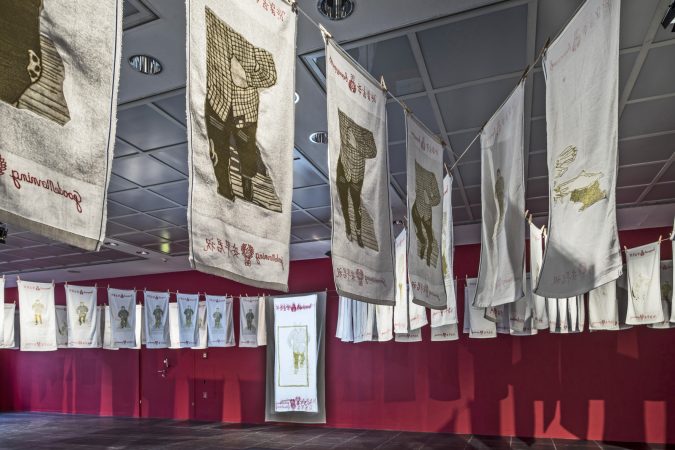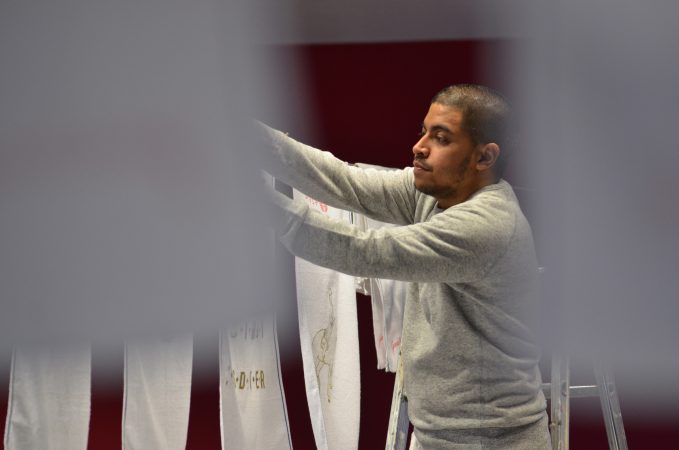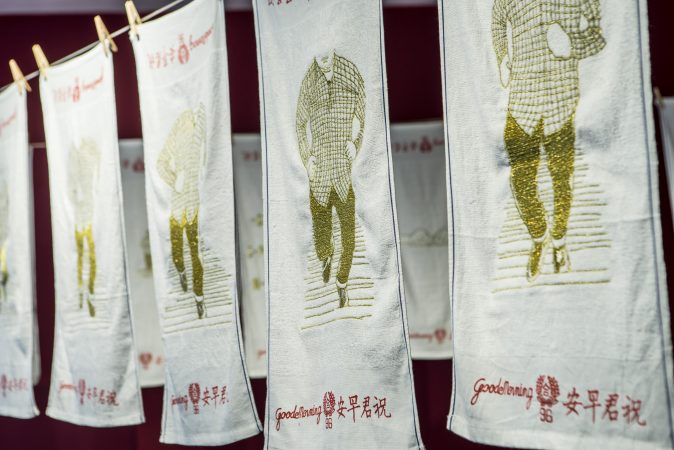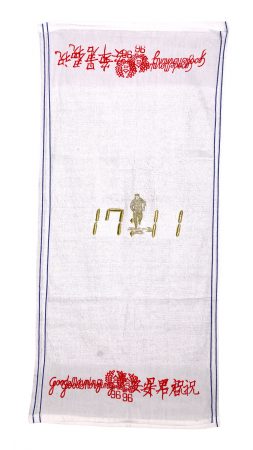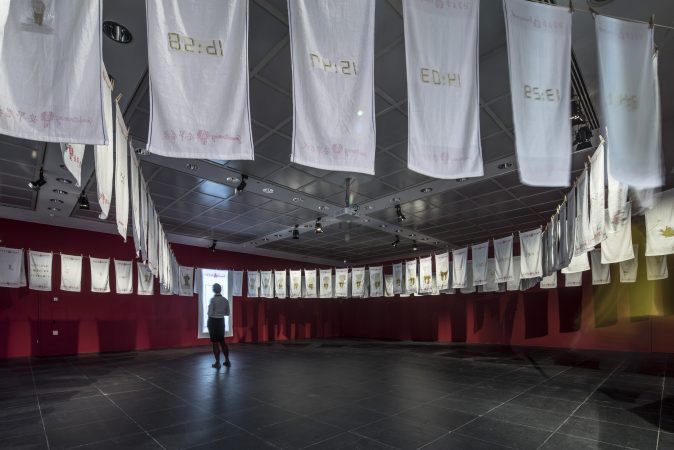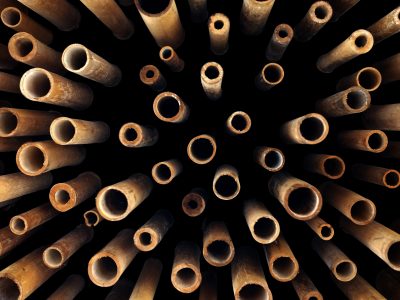Roots – Tromarama
BREAK A LEG, 2015
video animation, towels, wire
Courtesy the artist
The idea for “Break A Leg” began with the ordinary Good Morning brand of towels. These thin disposable rectangles of cheap white cotton are mass produced in China and sold throughout Asia in packages of multiples. Hundreds of Good Morning towels are hung along a criss-cross pattern of clotheslines, a familiar scene in the side streets, alleyways and common areas in Asia, and around the world. The art collective Tromarama often departs from simple, familiar everyday objects as the site from which to reflect on a variety of issues: in this case, the increasing pressures on individuals, families, and communities to keep pace with recent transformations in early 21st century globalisation – processes of production, distribution and consumption. The simple towel has been repurposed and animated: it has become the background for a video projection that shows a man walking up a seemingly endless flight of stairs that lead nowhere. His monotonous movements are accompanied by images symbolic of the economic and political conditions that influence commonplace effort. The criss-crossing lines hung with thin white towels may also be likened to an assembly line of mass production. The work evokes a similar notion of sameness, and hence homogeneity. However, as we move through the space, it becomes clear that each object is unique. This has implications regarding the artists’ concerns over a person’s worth in the latest wave of global industrialisation.
Tromarama consists of Febie Babyrose, Ruddy Hatumena and Herbert Hans. They have been collaborating since 2006 while students at the Institute of Technology in Bandung. Groups like Tromarama are participants in a larger movement of collectives and creative labs that have consolidated around the idea of a creative industry in Bandung. They are among the younger generation of artists for whom the digital revolution and the Internet have shaped the way they think and work. Perhaps as a mode of self-reflexivity, the group has been exploring the possibilities of mediation via processes of stop-motion animation for the last nine years. They combine the meticulous, manual process of craftsmanship with instantaneous digital photography, thus accentuating the fact that images are not innocent nor are they natural, but are constructions. They often collaborate with others within the collective community in Bandung to produce the soundscapes and music for their works.

